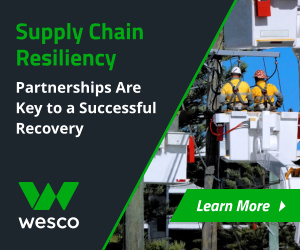Guidehouse
Aditya Ranade has nearly twenty years of experience in both the public and commercial sectors, serving corporations, utilities, investors, and government officials. Currently he leads the infrastructure resilience solutions team for Guidehouse, serving energy providers and specializing in climate resilience, grid modernization, and regulatory policy. He holds a PhD in materials science and engineering from Case Western Reserve University and an MBA from Babson College.
How are leading utilities advancing resiliency programs today in anticipation of increased threats to their customers and infrastructure from climate change, storms, and wildfires?

Aditya Ranade: Leading utilities are taking a few key steps in addressing resiliency. The first is to assess their assets’ vulnerability to extreme weather events by developing correlations between historical weather and their systems, such as inspections and outage databases. They can then use these correlations to develop future asset vulnerabilities to climate-driven natural hazards such as storms, floods, and wildfires.
Leading utilities’ resiliency programs are also typically ahead in their digital journeys by developing geospatial asset registries, accessible outage management systems, and digitized inspection data. A plethora of public and private datasets with downscaled climate data is available to choose from, so selecting among the choices can sometimes be overwhelming.
Utilities should think through the appropriate timeframe and climate scenarios for these hazards and choose datasets with appropriate spatial and temporal resolution for various situations. Some hazards, such as wildfires, are worsened by climate change and are a persistent threat today.
Others, such as chronic heat, may not take effect for a couple of decades, and yet others, such as flooding, are impacted by land features such as elevation and topography.
Quantified benefit-cost analysis typically ensures smoother regulatory proceedings including approvals and cost-recovery, so the second step is for utilities to use this quantitative understanding of vulnerability for benefit-cost analysis on specific resiliency programs, such as pole replacements, undergrounding, and substation flood control.



